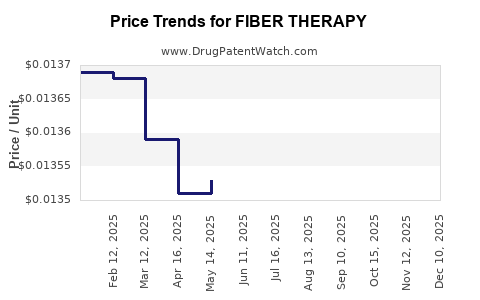Drug Price Trends for FIBER THERAPY
✉ Email this page to a colleague

Average Pharmacy Cost for FIBER THERAPY
| Drug Name | NDC | Price/Unit ($) | Unit | Date |
|---|---|---|---|---|
| FIBER THERAPY POWDER | 00904-5675-16 | 0.01366 | GM | 2024-11-20 |
| FIBER THERAPY POWDER | 00904-5675-16 | 0.01341 | GM | 2024-10-23 |
| FIBER THERAPY POWDER | 00904-5675-16 | 0.01364 | GM | 2024-09-18 |
| FIBER THERAPY POWDER | 00904-5675-16 | 0.01344 | GM | 2024-08-21 |
| FIBER THERAPY POWDER | 00904-5675-16 | 0.01316 | GM | 2024-07-17 |
| FIBER THERAPY POWDER | 00904-5675-16 | 0.01318 | GM | 2024-06-19 |
| >Drug Name | >NDC | >Price/Unit ($) | >Unit | >Date |


